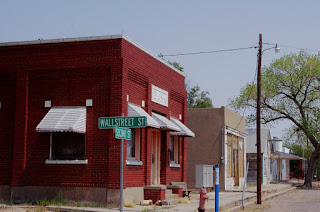Karval is one of those towns that
refuses to die. It is probably tougher
then Tombstone ever thought of being. Sitting
on a pretty dry plateau, close to no highways, the little prairie toughen
clings to life. They keep their school
open and there is a post office. The
last business, a restaurant, closed a few years ago.
Today the old highway, called main
street is full of empty store fronts and for the most part, empty. On Sunday it gets busy with the church goers
coming into town. This time of year
there is as bit more then usual activity.
For the locals are preparing for the Bird festival they host.
The Rocky Mountain Plover a is a
pretty rare bird and Karval is in its migration path. Tours are scheduled to take the bird watchers
out in the pastures, on private land and search for the elusive little plover. This is a time the bird lovers can access habitat
that is usually off limits.
Karval is pioneer community settled
by Norwegians in early 1900. They
migrated from the Kar Valley region of Norway and used this name to for their
new town, Kar Val…. Karval. Like many
homestead town, Karval flourished in the early 1900’s. There were shops, stores, garages, gas
stations …. Etc. Today it is the tumble
weeds that frequent the road and keep the traffic signs busy directing the flow
of tumbling weeds.
A building that is no more
Located due south of Hugo or due
north of La Junta, just off of road 109, Karval sits on a flat area making for
good farm land, just not lots of moisture.
There are bovine out in the grasses to greet people and there are the
prairie watchers sitting along side the road observing the traffic pass by.
The variety of birds, float overhand and the
buzzard hangs out on the fence waiting for its meat. Because it is so out of the way, few people will
travel to visit, the deckling little town.
























